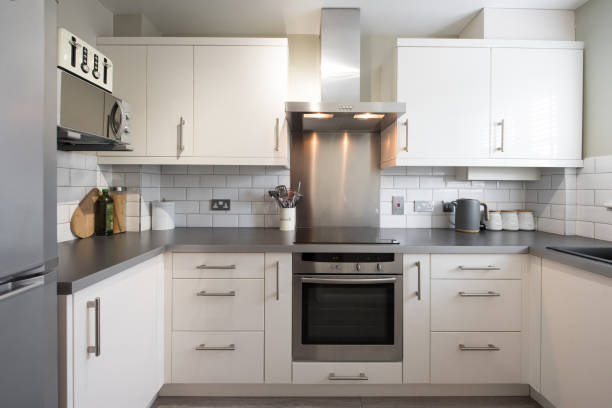In an era where environmental consciousness is more than just a trend, remodeling your home with sustainability in mind is a powerful way to contribute to the planet’s health while creating a healthier, more energy-efficient living space. Eco-friendly home upgrades not only lessen your ecological footprint but can also save you money in the long run. Here’s how you can embark on a green remodeling journey with CPP Kitchen & Bath Design Showroom, Cape Cod. Their expertise in sustainable design can guide you through selecting eco-conscious materials and energy-efficient appliances that transform your home while respecting the environment.
Start with an Energy Audit
Before diving into specific upgrades, understanding where your home stands energy-wise is crucial. An energy audit can pinpoint where your home is losing energy and what upgrades will make the most significant impact. For those looking to enhance their home’s efficiency in a stylish way, consulting with Glamour Decorating, NYC can be a smart move. Their expertise not only covers aesthetic enhancements but also incorporates energy-efficient solutions that align with modern environmental standards, ensuring your decor updates are both beautiful and beneficial to your home’s energy use.
Identify and Prioritize
Based on the audit, prioritize upgrades that will have the most immediate effect on your home’s energy efficiency. This could range from sealing leaks and improving insulation to replacing outdated appliances with energy-efficient models.
Upgrade to Sustainable Materials
Choosing the right materials is at the heart of eco-friendly remodeling. Sustainable materials are not only better for the environment but they also tend to create a healthier indoor atmosphere.
Go for Green Building Materials
Look for materials with low environmental impact, such as bamboo flooring, recycled glass tiles, or reclaimed wood. These materials often come with the added benefit of unique aesthetics and stories behind them.
Low-VOC Products
Using paints, sealants, and adhesives with low volatile organic compounds (VOCs) improves indoor air quality. These products minimize exposure to harmful chemicals, making your home safer and more comfortable.
Embrace Energy-Efficient Windows and Doors
Windows and doors are often the weakest link in a home’s energy efficiency. Upgrading to energy-efficient models can drastically reduce heat loss in winter and heat gain in summer.
Double or Triple Glazing
Opting for double or triple-glazed windows with a high energy rating can significantly improve your home’s insulation. This upgrade is a game-changer for both energy conservation and noise reduction.
Sealing and Weatherstripping
Simple fixes like sealing gaps and adding weatherstripping around doors and windows can make a considerable difference in preventing air leaks and reducing energy bills.
Invest in Renewable Energy Sources
Incorporating renewable energy into your home is one of the most impactful ways to reduce your carbon footprint.
Solar Panels
Solar panels are increasingly affordable and can significantly reduce your electricity bills. Some regions offer incentives or rebates, making solar an even more attractive option.
Solar Water Heating
A solar water heating system can meet most of your hot water needs, reducing reliance on gas or electricity. This system is particularly effective in sunny regions.
Water Conservation Measures
Water is a precious resource, and incorporating water-saving measures into your remodel can have a big impact.
Low-Flow Fixtures
Installing low-flow toilets, showerheads, and faucets can dramatically reduce your water usage. These fixtures have come a long way in design and efficiency, offering comfort and performance without wasting water.
Rainwater Harvesting
Collecting rainwater for outdoor use is a simple way to conserve. Whether you install a sophisticated system or a basic barrel, rainwater can irrigate your garden and fill ponds, reducing your municipal water use.
Smart Home Technology
Modern technology offers numerous ways to increase your home’s efficiency through automation and smart devices.
Programmable Thermostats
A smart thermostat can learn your schedule and adjust heating and cooling for optimal energy use. Some models even allow you to control settings remotely via your smartphone.
Energy Monitoring Systems
These systems provide real-time data on your energy consumption, helping you identify where you can cut back. Knowledge is power when it comes to reducing your environmental impact.
Conclusion
Eco-friendly home upgrades are an investment in the future of the planet and your own wellbeing. By choosing sustainable materials, improving energy efficiency, conserving water, and incorporating renewable energy, you can create a home that’s not only beautiful and comfortable but also kind to the earth. Remember, every small change contributes to a larger impact, making your green remodel a meaningful step towards a sustainable lifestyle.







